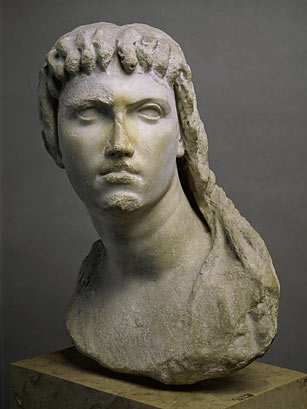
The Egyptian Queen Cleopatra is remembered for the luxuries of her fabled kingdom, her dazzling beauty and, above all, her death. Immortalized by Shakespeare, her alleged suicide was the stuff of romantic legend — despairing after the defeat in battle of her lover, Marc Antony, she succumbed to the venomous bite of an asp rather than be taken captive by the victorious Roman Octavian, nephew of Julius Caesar, another one of her many paramours. Over the centuries, Cleopatra has become synonymous with seduction, her feminine wiles aligned alongside an image of the East as decadent, debauched and ready to be taken.
Recent scholarship, though, has done much to bring the real Cleopatra into the light, showing how the ancient monarch was a shrewd politico bent on defending the land her family's dynasty had governed for some two centuries, while expanding her influence into the Roman world. Scholars still puzzle over the true extent of beauty and debate her racial origins — some say she was more African, others point to the decidedly Greek character of dynastic line. Most recently, Egypt's archaeologist in chief, the controversial, flamboyant Zawi Hawass, unveiled an extensive mission to unveil her and Antony's supposed tomb, a find that could shed more light on the tragic couple's last moments. But, thus far, the search has gone cold and the legendary queen remains still ensconced in myth.